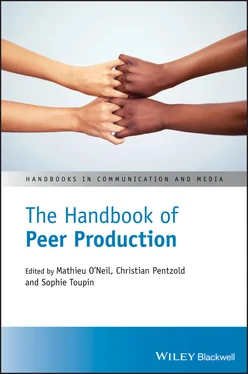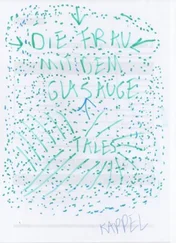When human sociality is mediated by telecommunications systems, it leaves digital traces wherever it goes, traces that can be mined to generate data that enable advertising to be targeted with ever‐greater accuracy. The Internet is thus constituted as a vast virtual shopping mall, with its users bombarded with a constant stream of advertising, preying on their most personal vulnerabilities.
(p. 15)
These concerns have been explored within scholarly debates about immaterial labor, free labor, and digital labor (Lazzarato, 1996; Terranova, 2004; Scholz, 2013). The primary concern in these debates has been the nature of work and labor within the information, knowledge, and communication industries with a focus on forms of unpaid labor occurring online (see Andrejevic, 2007, 2012; Fuchs 2012). Particular attention has been paid to users' online behaviors, which are tracked and can be transformed into an audience commodity in the same way that Dallas Smythe (1981) identified with broadcasting. However, whereas Smythe argued that broadcast programs constituted a “free lunch” by producing audiences for advertisers, the parallel to online activity lies in platforms or web sites seeking the attention (or interaction) of users while data is collected about those activities. As we continue to rely on digital devices for an increasing amount of our social lives, the time spent online during both work and non‐work time, our digital labor – socially necessary time spent online – offers a more sophisticated form of the audience commodity as browsing data is extracted and transformed into value by service providers and other third‐party elements (Fuchs, 2011; McGuigan & Manzerolle, 2013; Turow, 2013).
The tendency of Internet platforms to monitor, measure, collect, and ultimately monetize data about their users has become one of the dominant business models existing online today. The idea is seemingly sound: encourage users to socialize, interact, create, share, or otherwise rely upon your service for connecting with others, and platforms can extract data from those interactions that can be monetized through sales to advertisers or other data companies. In effect, users are generating value gratis for these platforms, and there is evidence to suggest that the vast majority of users do not realize this. One recent study showed that 74% of Facebook users did not know the site maintained a list of their interests and traits, and 51% of respondents claimed they were not comfortable with this (Hitlin & Rainie, 2019). However, platforms generally continue to grow rapidly as more people migrate online and begin to use their services. This general trend remains true even if some platforms struggle to become profitable. For example, the music‐streaming platform Spotify was unprofitable for its first ten years, and only reported its first profitable quarter at the end of 2018 (see Wang, 2019). Ride‐sharing companies, Uber and Lyft, similarly struggle with profitability (see Colley, 2019). Because of the potential for rapid growth and the prospects of future profitability, tech startups continue to draw attention from venture or investment capital. The massive capital investment in these companies, which seem to be valued more for their growth than their profitability, has led some to predict that it is only a matter of time before we experience another tech bubble burst (Colley, 2019).
Despite the seemingly bleak picture presented here, however, there are also contradictory forces within these developments that suggest we may also be witnessing the emergence of a new subjectivity, which is capable of counteracting the incessant drive for capital accumulation. Indeed, it is within these contradictory forces that we can begin to understand the different dynamics at play in the political economy of peer production. At times, these forces exemplify the drive to accelerate capital accumulation, as I have already outlined above, while at other times these forces work to ensure the survival of collectively governed resources.
5 The Commons as Alternatives
The previous sections of this chapter outlined the historical forces that led to the transformation of global capitalism in the 20th century and explained how and why platforms for extracting value from activities taking place online were developed. However, despite the fact that the forces of capitalism (digital, surveillance, or otherwise) seek ways of exploiting the shared experiences of people around the globe, the fact that people are becoming more interconnected also means that they can collaborate in ways that subvert some of the dominant tendencies of global capitalism. Some scholars also see radical potential within these shared experiences and the values inherent in commons‐based peer production that may have the potential to bring about an alternative future. In other words, the early parts of this chapter focused on the external factors that made possible peer production, but we now need to consider the features internal to peer production that make it unique as well as capable of challenging those external forces. In the remaining portions of this chapter, I draw on a growing corpus of scholarship that positions peer production and the commons or “the common” as an alternative to capitalism.
In their examination of “empire,” Hardt and Negri (2000, 2004, 2009) argue that the sovereignty of the nation state has been replaced by a decentralized and ever‐expanding regime of power that demolishes barriers between what is inside and what is outside of the empire. What emerges from this system of power is an interconnected network, which is capable of managing “hybrid identities, flexible hierarchies, and plural exchanges through modulating networks of command” (Hardt & Negri, 2000, pp. xii–xiii). But whereas these networks enable the nearly seamless flow of global capital, command of commodity supply chains, and increased control and discipline of labor, they also simultaneously give rise to contradictory forces that challenge the prevailing order. For example, the increasing interconnection of peoples, places, cultures, creativity, and so on, makes possible the creation of “the common.” By “the common,” Hardt and Negri refer not only to “the common wealth of the material world – the air, the water, the fruits of the soil, and all nature’s bounty” but also to “those results of social production that are necessary for social interaction and further production, such as knowledges, languages, codes, information, affects, and so on” (Hardt & Negri, 2009, p. vii). The production of the common, particularly as it pertains to peer production online, manifests in the sharing of free and open source software projects, open access book projects, “wikis” dedicated to curating knowledge and information, cultural products in the public domain, and many other projects aimed at creating and preserving shared resources that may be accessed by others.
However, there is more at play in the commons than simply a collectively governed resource. The commons can also be viewed as a “process of becoming,” which moves beyond the commons as an identity and orients human activity toward an ethical horizon to which we can aspire (Dyer‐Witheford, 2006; Hardt & Negri, 2009; Ryan, 2013; Gutiérrez‐Aguilar, 2014; Singh, 2017). For this reason, Linebaugh (2008) prefers the active verb “commoning,” which he explains is “embedded in a labor process”; it is collective, and it is “independent of the temporality of the law and the state” (p. 45). Moreover, this framing helps account for the “dual nature” of the commons, which encompasses both the objects of the commons (i.e., a collectively governed resource to which all members of the community claim some association) as well as a subjectivity in which the values of mutual aid, care, trust, and conviviality can be produced and reproduced over time (DeAngelis, 2017). The focus on reproduction is particularly important here, as it corresponds to the critiques from feminist political economy that drew attention to forms of unwaged labor and social reproduction, both of which are instrumental to capitalism but also sites of struggle (Dalla Costa & James, 1975; Jarrett, 2016; Federici, 2012).
Читать дальше


![О Генри - Справочник Гименея [The Handbook of Hymen]](/books/407356/o-genri-spravochnik-gimeneya-the-handbook-of-hymen-thumb.webp)









